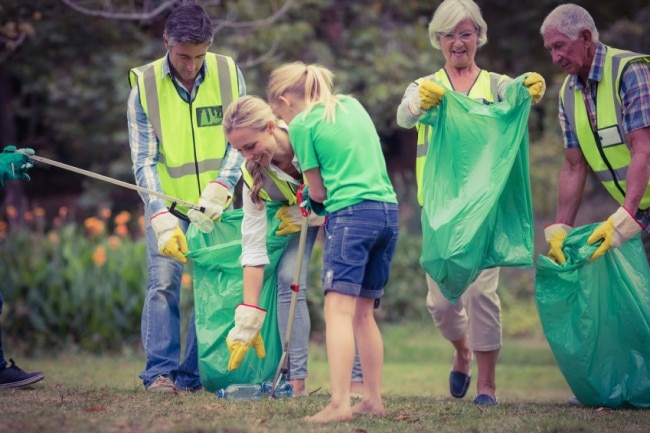Serving meals to the hungry, cleaning up local parks, helping teens with their homework — volunteers of all ages engage in many selfless activities every day that make the world a better place.
But as we reflect on such good deeds, it’s also worth considering the ways in which volunteering helps improve the lives of the givers themselves.
“Research shows that not only can volunteers do good for others, but volunteering can be good for those who serve too,” says Samantha Jo Warfield, a spokesperson for the Corporation for National and Community Service (CNCS).
Over the past 20 years, numerous studies have linked volunteerism to many mental and physical health benefits, according to the CNCS. Such positives include:
• Lower mortality rates
• Reduced rates of depression later in life
• Lower levels of stress
• Reduction in the intensity of chronic pain
“The health benefits are enormous,” Warfield says.
Older volunteers report biggest benefits
Volunteers themselves testify to the benefits of their activity. A survey by UnitedHealth Group found that among people who volunteer:
• 96 percent said volunteering gave them more of a sense of purpose
• 94 percent said it improved their mood
• 78 percent said it reduced their stress levels
• 76 percent said it made them feel healthier
The benefits of volunteerism are especially pronounced for seniors, Warfield says. One study found that among people who are 60 or older, the more they volunteer the greater their sense of well-being.
The benefit of volunteering may increase with age because doing such good works promotes both social contact and a sense of purpose, according to CNCS.
Volunteerism and physical health
Perhaps it is little surprise that volunteerism boosts happiness and promotes good mental health. However, the physical health benefits of volunteering may be more of an eye-opener.
A 2013 study from Carnegie Mellon University found that adults 50 and older who volunteered at least 200 hours during the course of a year were 40 percent less likely to develop high blood pressure than their less generous peers.
Interestingly, people who volunteered less than 200 hours did not record a similar benefit.
Warfield says studies also have found that older people who volunteer at least 100 hours annually have reduced mortality rates, and that MRI studies show that volunteering can increase brain activity in older volunteers.
“Many of the benefits demonstrated in the research would be best achieved by sustained, long-term volunteering,” Warfield says.
How to get started
For many people, one of the biggest challenges around volunteering is simply getting started.
Warfield encourages new volunteers to get involved with any activity about which they feel passionate. The key is to find something that will motivate you to continue volunteering.
That may be a project that involves working with the homeless or protecting the environment. But it also can be something simpler and closer to home.
“If you’re trying to stay fit, volunteer as a coach or referee for a kids sports organization,” she says. “For those looking for a personal connection, a volunteer activity like mentoring may be a good fit.”
Another good way to start is to buddy up with a friend.
“People are more likely to get involved in nonprofit organizations and charities if they have someone to do it with them,” Warfield says.
Finally, Warfield encourages everyone to try their hand at volunteering, no matter their age.
“Here in D.C., we have one volunteer who started when she was 80 and is still going strong 25 years later,” Warfield says.
Related reading: 3 ways to cultivate compassion

